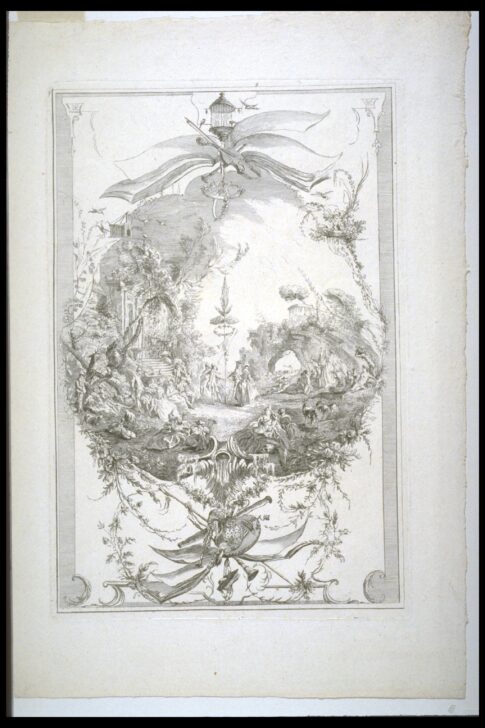The Maypole Dance
Claude-Henri Watelet

Description
The Rococo style depicted here pervaded all aspects of decoration in the middle of the eighteenth century, including dress, decorative arts, and graphic design. In part a reaction to the severe classicism of Charles Le Brun and the court of Versailles, Rococo derived its impetus from the irregular and asymmetrical forms of nature and also from the imagined design traditions of Asian cultures, which were embodied in the fantasies of Chinoiserie. In this scene, elegant men and women inhabit an imaginary realm that contains elements of both a formal park with graceful architectural features and a bucolic setting with sheep. Groupings of figures engaged in conversation surround the central feature of the maypole. Watelet evokes the fête galante with roots in the paintings of Watteau, a convention of depicting refined figures, often in a park-like setting, engaged in dancing, courtship, and conversation. In this regard, Watelet’s etching shares the same sense of delicate sensibility and gentle elegance with Crépy’s la Perspective elsewhere in the gallery. Unlike Crépy’s faithful translation of Watteau’s composition, Watelet’s delightful confection emphasizes the fantastical undulating and curving framework of shells, tendrils and ribbons that is a hallmark of the Rococo decoration.
Exhibition label copy from "Eighteenth Century French Prints and Drawings," February 1 - May 4, 2003 by Curator Carole McNamara
Usage Rights:
If you are interested in using an image for a publication, please visit https://umma.umich.edu/request-image/ for more information and to fill out the online Image Rights and Reproductions Request Form.